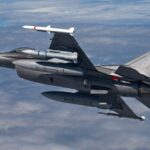The Joint Staff has just completed a review of the three-year-old Capstone Concept for Joint Operations (CCJO), a document developed under then-Chairman of the Joint Chiefs Adm. Mike Mullen and expected to guide force development and experimentation. “What we’re doing now is undertaking a revision of that document, under a pretty aggressive timeline,” Marine Lt. Gen. George Flynn, director of joint force development on the Joint Staff, said in a recent briefing. The CCJO offered a way to solve problems…
Contract Updates
UPDATE: Belmont Instrument LLC (Billerica, Massachusetts (SPE2D1-26-D-0004) – $48,750,000),
UPDATE: Belmont Instrument LLC, Billerica, Massachusetts (SPE2D1-26-D-0004, $48,750,000), has been added as an awardee to the multiple award contract for medical equipment and accessories for the Defense Logistics Agency Electronic Catalog, issued against solicitation SPE2DH-21-R-0002 and awarded Feb. 10, 2022.…
Gilbane Japan GK (Tokyo, Japan) – $53,097,051
Gilbane Japan GK, Tokyo, Japan, has been awarded a $53,097,051 firm-fixed-price contract for project LXEZ201072 Repair Special Operations Wing Facility B3524. This contract provides for a design-build project with the purpose of replacing existing concrete roof and repair 38,875 square-foot…
Raytheon Co. (Fort Wayne, Indiana) – $15,401,144
Raytheon Co., Fort Wayne, Indiana, was awarded a $15,401,144 firm-fixed-price contract to update the Advanced Field Artillery Tactical Data System. The amount of this action is $15,401,144. Bids were solicited via the web with one received. Work will be performed…
Gilbane Federal (Concord, California) – $17,249,472
Gilbane Federal, Concord, California, was awarded a $17,249,472 firm-fixed-price contract for the conversion of a building to a secure space. The amount of this action is $17,249,472. Bids were solicited via the web with three received. Work will be performed…

 By
By 











